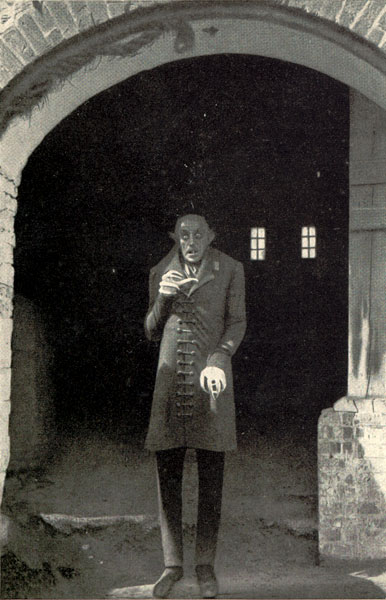Expressionism in Nosferatu (1922)
Sou Mas 4, 1922, F.W. Murnau released Nosferatu (1922). Nosferatu was Murnau’s adaptation of the Dracula novel by Bram Stoker. Murnau neglije yo achte dwa yo ki nan fim istwa a nan byen Stoker a, ki prèske mennen nan sa a fim te pèdi nan fim telespektatè.
Stoker’s widow successfully sued Murnau and the German film company that produced the motion picture. The German judge ordered all the copies of the film destroyed. Fortunately for film historians and fans, several film institutes including the French Cinema group kept copies that were not destroyed. The prints were later discovered and film scholars began to study the film in the 1960s.
Film scholars gave the movie rough reviews in the 1960s film journals that I read on the Lantern Film Database site. Most of the commentators stated the film was choppy and sloppy. Technological difficulties may be responsible for these criticisms.
American films were shot at either 16 oswa 24 pye pou chak dezyèm. Projectors were set to show films at these two speeds. Sepandan, German films of the 1920s were normally shot at 18 pye pou chak dezyèm. Prior to modern restoration, these films were not able to be screened at the speed that the films were originally shot. The films either appeared rushed because they were being shown at 24 feet per second or they looked slow and choppy at 16 pye pou chak dezyèm.
This fact is important because Murnau used sped up footage to exhibit Count Orlock’s, the Nosferatu’s, super human abilities. Murnau also used the common set design that we expect in German Expressionism. We see plenty of arched doors and windows, many stairs and stark, empty spaces.
We first see Orlock disguised as the carriage driver, who will take Hutter to his castle. After he picks up Hutter, we see the horse drawn carriage speed up the hill faster than any sports car could travel. The viewer is clued in that Orlock’s power is being exerted to achieve this impossible speed of the carriage.
Apre sa, we see Orlock loading his coffin and three others onto the back of a carriage. He carries each coffin by himself and places it on a cart. The placement occurs at a speed that the average human could only do empty handed and running. Orlock is walking at this speed.
Murnau’s use of sped up movement would be copied by Paul Leni when he brought German Expressionism to American productions such as The Cat and the Canary (1927).
The film (lyen afilye) runs about 82 minutes and is viewed at the proper speed with the tinting of the original film. I was much more impressed with the film than the first time I saw it. If you are a fan of German Expressionism, I would recommend this version before you pass judgement on the film.
You can leave a comment or ask a question about this or any post on my Facebook page.
Kloure Li


